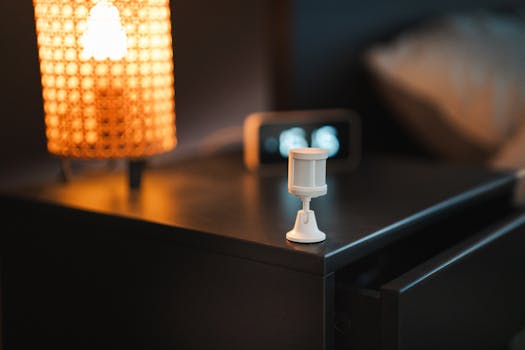
Home Automation in 2025: The Smart Home Ecosystem
Home Automation in 2025: The Smart Home Ecosystem is revolutionizing the way we live, work, and interact with our living spaces. With the rapid advancement of the Internet of Things (IoT) and Artificial Intelligence (AI), homes are becoming smarter, more efficient, and more connected. In this article, we will explore the latest trends and technologies in home automation, creating a smart home ecosystem that makes life easier, safer, and more convenient.
Introduction to Home Automation
Home automation refers to the use of technology to control and monitor various aspects of a home, including lighting, temperature, security, and entertainment systems. The goal of home automation is to create a seamless and integrated experience, where all devices and systems work together to provide a comfortable, convenient, and secure living environment. With the help of AI and IoT, home automation systems can learn and adapt to the habits and preferences of the occupants, making it an essential component of modern living.
Key Components of a Smart Home Ecosystem
A smart home ecosystem consists of several key components, including:
- Smart Speakers and Hubs: Devices like Amazon Echo, Google Home, and Apple HomePod serve as the central hub for controlling and interacting with various smart devices.
- Smart Lighting: LED bulbs and lighting systems that can be controlled remotely, scheduled, and adjusted to create different ambiance and mood settings.
- Thermostats and Climate Control: Smart thermostats like Nest and Ecobee can learn and adapt to the occupants’ temperature preferences, optimizing energy consumption and comfort.
- Security Systems: Advanced security cameras, doorbells, and alarm systems that can detect and alert homeowners to potential threats, providing an additional layer of safety and peace of mind.
- Entertainment Systems: Smart TVs, soundbars, and streaming devices that can be controlled and integrated with other smart devices, creating an immersive entertainment experience.
Benefits of Home Automation
The benefits of home automation are numerous, including:
- Convenience: Smart devices can be controlled remotely, allowing homeowners to adjust lighting, temperature, and security settings from anywhere.
- Energy Efficiency: Smart thermostats and lighting systems can optimize energy consumption, reducing waste and saving homeowners money on their utility bills.
- Enhanced Safety: Smart security systems can detect and alert homeowners to potential threats, providing an additional layer of safety and peace of mind.
- Increased Property Value: A smart home ecosystem can increase the value of a property, making it more attractive to potential buyers and renters.
Challenges and Limitations of Home Automation
While home automation offers many benefits, there are also challenges and limitations to consider, including:
- Interoperability: Different smart devices and systems may not be compatible with each other, creating integration challenges and limiting the overall functionality of the smart home ecosystem.
- Security Risks: Smart devices can be vulnerable to hacking and cyber attacks, compromising the security and privacy of homeowners.
- Cost: Implementing a smart home ecosystem can be expensive, requiring a significant upfront investment in hardware and software.
- Complexity: Smart devices and systems can be complex and difficult to use, requiring a significant amount of time and effort to set up and maintain.
Conclusion
In conclusion, home automation in 2025 is a rapidly evolving field, with new technologies and innovations emerging every day. While there are challenges and limitations to consider, the benefits of a smart home ecosystem are clear. By embracing home automation, homeowners can create a more comfortable, convenient, and secure living environment, making life easier, safer, and more enjoyable. As the technology continues to advance, we can expect to see even more exciting developments and innovations in the world of home automation.






